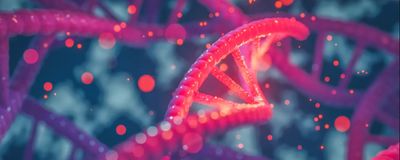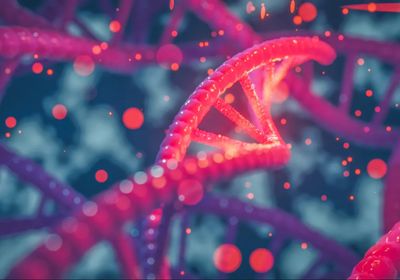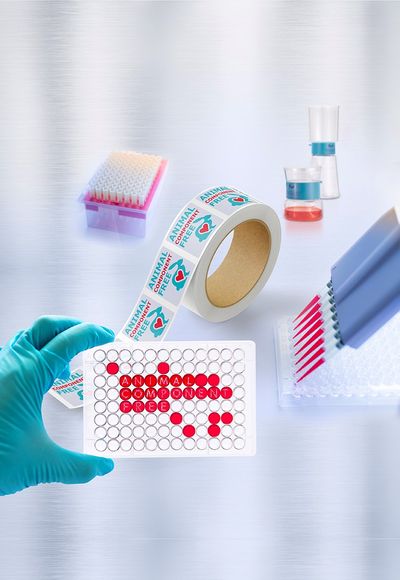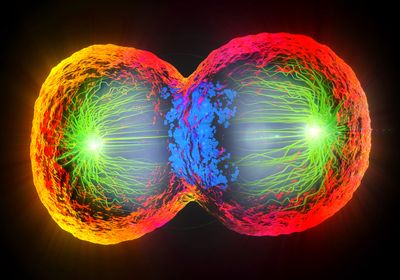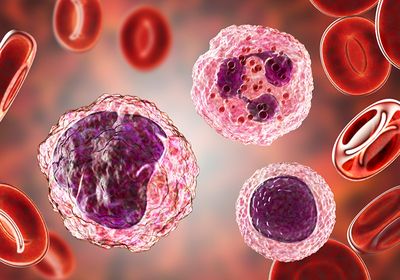ABOVE: ISTOCK.COM
Bringing together engineers, physicists and molecular biologists, the field of synthetic biology uses engineering principles to model, design and build synthetic gene circuits and other molecular components that don’t exist in the natural world. Researchers can then piece together these biological parts to rewire and reprogram living cells – or build cell-free systems – with novel functions for a variety of applications.
“For me, the most exciting thing about synthetic biology is finding or seeing unique ways that living organisms can solve a problem,” says David Riglar, Sir Henry Dale research fellow at Imperial College London. “This offers us opportunities to do things that would otherwise be impossible with non-living alternatives.”
Scientists are harnessing the power of synthetic biology to develop a variety of medical applications – from powerful drug production platforms to advanced therapeutics and novel diagnostics.
“By approaching biology as an engineering discipline, we are now beginning to create programmable medicines and diagnostic tools with the ability to sense and dynamically respond to information in our bodies,” says Jim Collins, Termeer professor of medical engineering and science at Massachusetts Institute of Technology (MIT).
These novel medicinal products could be endowed with synthetic elements that can control the localization, timing and dosage of their activities. This offers significant advantages over conventional therapeutics in terms of flexibility, specificity and predictability – opening exciting opportunities for precision medicine.
A toolkit for synthetic biology
In recent years, rapid decreases in the cost of DNA sequencing and synthesis – and the development of gene-editing technologies, such as CRISPR-Cas9 – have enabled researchers to engineer biological systems with unique and increasingly complex functions.
“The combination of these tools has provided us with unprecedented opportunities to apply synthetic biology to study living systems and understand how they work,” states Riglar.
The underlying premise of synthetic biology is that living systems can be broken down into a library of individual components. Engineering principles are then used to design and construct these biological parts into new systems for a wide variety of industrial, agricultural, pharmaceutical and environmental applications. But in practice, these bioengineering approaches are not always straightforward.
“There are two big challenges – the first is that we still don’t have a broad set of design principles for biology – and that means that its complexity can still get in the way of our best design plans,” explains Collins. “Secondly, we still have a pretty anemic library of biological parts – to the order of a few dozen that have been reused and repurposed in the last two decades. We need to dramatically expand this toolkit through synthesis and biomining efforts.”
To help drive future progress, synthetic biologists are beginning to take advantage of machine learning approaches – which can be used to help inform design, such as by generating novel components or suggesting the best experiments to perform.
Gut biosensors
In recent years, there has been a surge of studies revealing that the trillions of microbes living in and on our bodies play a vital role in maintaining good health. These have largely used next-generation sequencing approaches to provide a snapshot of the type and abundance of species in these microbial communities, drawing relationships between healthy and disease states. The results have uncovered associations between disruptions to the human gut microbiota and many different diseases – including inflammatory bowel disease, cancer and neurodevelopmental disorders. But other experimental approaches are needed to understand the underlying mechanisms for how interactions between the gut microbiota and the host affect human health and disease.
“One of the most challenging things about studying the gut is that it’s pretty inaccessible,” says Riglar. “That’s why there is currently a very limited understanding of what’s happening in these back-and-forth interactions between the host and the microbiota.”
Advances in synthetic biology are enabling researchers to create engineered probiotic bacteria that can sense, record and report on changes occurring inside the gut. Using this approach, Riglar’s team has generated biosensors that can function as live diagnostics of inflammation – or be used to measure bacterial dynamics in response to inflammation and underlying variations in the microbiota in the mouse gut.
In the short term, these living biosensors will help researchers to gain a better understanding of the disease processes to reveal pathways that could be targeted with traditional therapeutic approaches. But the longer-term goal is to develop engineered bacteria for clinical applications – such as monitoring for changes in the gut that can reveal the presence of a disease. For example, Collins’ group recently demonstrated the potential of using an engineered strain of Lactococcus lactis, a bacterium commonly found in fermented food products, as a living diagnostic that could help improve disease surveillance in populations at risk of cholera outbreaks.
Advanced therapeutics
Researchers are also applying synthetic biology to engineer living cells and cell-free systems that can sense and dynamically respond to information in our bodies – moving us toward an era of programmable medicines.
Antibiotics not only target bacteria causing an infection, but they also can alter the gut microbiota – which can cause diarrhea, and contribute to the emergence of antimicrobial resistance and the development of many chronic diseases. To help overcome these problems, Collins’ team engineered a strain of L. lactis that can degrade a class of widely used antibiotics in the gut. When given to mice in combination with antibiotics, this helped to protect the gut microbiota while leaving the antibiotic concentrations in the bloodstream unchanged.
“By applying synthetic biology, we have designed a living therapeutic that has the potential to help counter the potential negative effects of antibiotic use,” says Collins.
Further along the clinical development pathway is a live therapeutic for a rare genetic disease called phenylketonuria (PKU). Children born with this condition are unable to break down phenylalanine, which can build up in their bodies and cause brain damage. As an alternative to a protein-restricted diet, researchers have engineered bacteria that can degrade this amino acid within the gut. The positive top-line results of a phase 2 trial study led by the biotechnology company Synlogic demonstrated this living therapeutic could successfully lower the levels of phenylalanine in the bloodstream – indicating it has the potential to become a transformative treatment for patients with PKU.
Researchers are also using synthetic biology to engineer novel therapeutics without the use of living cells. Many RNA-based therapeutics are messenger RNAs (mRNAs) encoding a therapeutic protein – but targeting gene expression only to those cells causing or affected by a disease is proving a major hurdle. To address this challenge, Collins’ group has developed eToeholds, small programmable switches that can be built into an RNA sequence to target protein production to certain cell types or states – such as virally-infected cells.
“This system offers unparalleled programmability and flexibility – opening a wealth of opportunities for designing RNA therapeutics that are only activated in cells where they are needed, reducing the risk of unwanted side effects,” enthuses Collins.
Solving global challenges
At the interface of biology and engineering, synthetic biology is set to become one of the dominant medical technologies of this century.
“It’s an exciting time to be working in this field,” says Collins. “I hope we will see new classes of therapeutics and diagnostics that will have a broad impact on people’s lives around the world within the next decade or so.”
But the potential of synthetic biology goes far beyond improving human health – as the application of these technologies could also help researchers to address some of the world’s most pressing environmental and sustainability challenges.
“I think the idea of applying engineering principles to living systems that have evolved over billions of years can provide humanity with a real edge to counter some of the existential challenges we’re facing,” states Collins.

This story was originally published by Technology Networks, a trusted scientific news publication that provides high-quality coverage of analytical chemistry, life sciences, drug discovery, and neuroscience.
